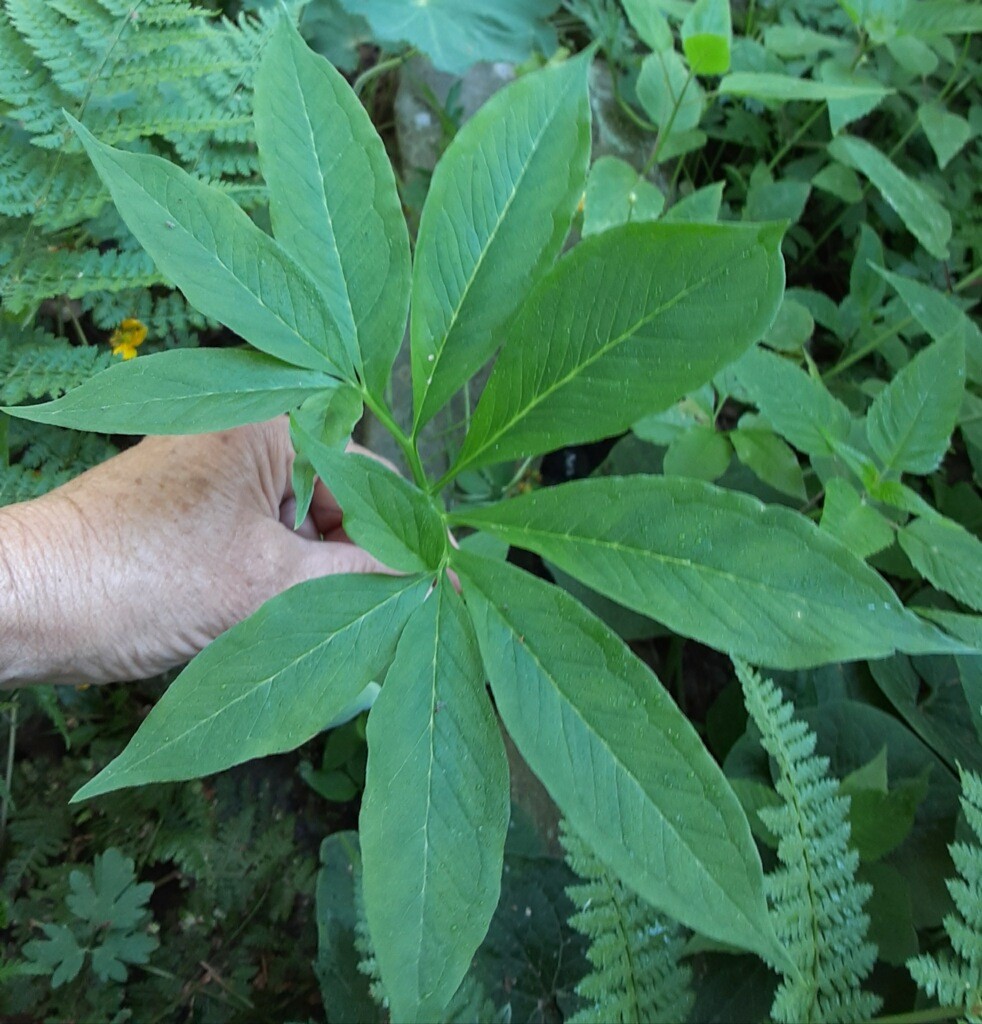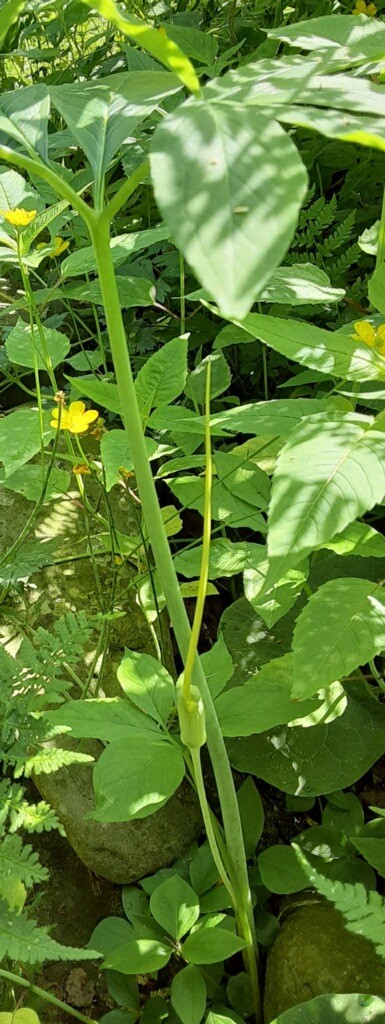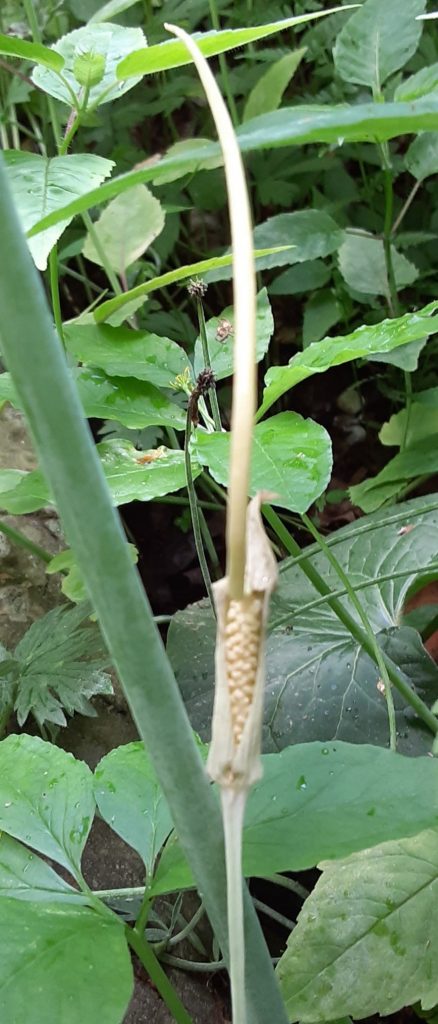By: Susan Sprout
I hope you are familiar with the native plant Jack-in-the-pulpit because I would like to introduce you to Jack’s less well-known relative in the same genus – Green Dragon. Arisaema dracontium, also a member of the Arum Family with Jack, is a native perennial plant that lives in the rich ground of low woods and flood plains.
The first one I ever found was along the muddy edge of the West Branch Susquehanna River, downstream from the Ellmaker Boat Landing in Montoursville. Green Dragons like dappled sunlight when they first appear in the spring and then more shade later on. That had happened quite naturally as the sycamores and silver maples leafed out over them there.

Each plant has a single leaf made up of five to fifteen smooth, oval leaflets and a single naked stem topped with its inflorescence or flowers, both arising from an underground tuberous corm. The unusual leaf usually grabs my eye first because it looks like the palm of a hand with too many fingers, swirling around the stem. Then I peek under it, and there is a dragon’s tongue!

Start at the very tip of the “tongue” and travel down four to ten inches and you will find the flowers at its base like little greenish-yellow balls hugged by the spathe, a leaf-like bract that partially surrounds them and allows the dragon’s tongue to ascend out the top. Fungus gnats attend to pollinate them, turning the flower column into a red-orange club made up of at least a hundred pear-shaped berries containing one to three seeds…treats for wild turkeys. Don’t try them yourself – they contain enough calcium oxalate to burn your mouth and, if eaten, cause severe gastric distress and kidney damage.

Look for the Green Dragon now. It will fly away… I mean go dormant…soon!

